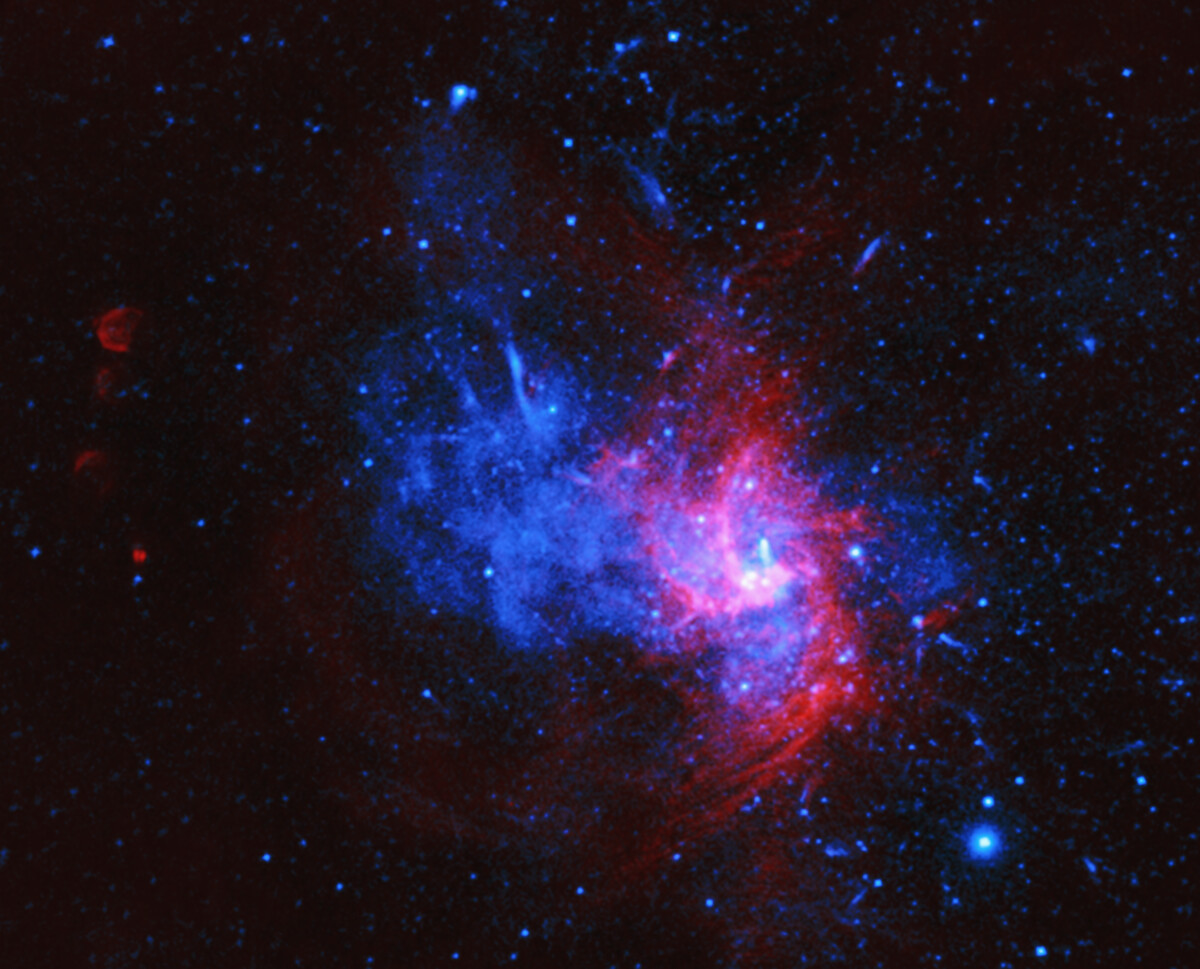A special find. Because it is a potentially important member of the supernova family.
A supernova is the phenomenon where a star explodes in a spectacular way. The eruption can be recognized by the enormous amount of light that is emitted for a short time. Supernovae come in different shapes and sizes (see box). And now researchers are in a new study possibly for the first time encountered a real ‘Type Iax supernova’ in our Milky Way.
Typen supernovae
Supernovae can arise in two ways. For example, a supernova can occur when white dwarfs explode in binary star systems (type Ia). In addition, types II, Ib and Ic occur when massive stars have come to the end of their lives and subsequently form neutron stars or black holes. Types Ib and Ic differ from type II in that their precursors lose material surrounding their central core just before exploding. Type Ib and Ic are slightly different in chemical composition from each other.
For some time now, astronomers have been aware of a special object near Sagittarius A *, the supermassive black hole at the center of our Milky Way Galaxy. Using NASA’s Chandra X-ray Observatory, researchers previously classified this intriguing object as a supernova remnant and named it Sgr A East. Follow-up observations now provide even more clarity about the object. “This supernova remnant is in the background of many Chandra images of the supermassive black hole taken over the past 20 years,” said researcher Zhiyuan Li. “We may have finally discovered what this object is and how it came to be.”
Supernova remnant Sgr A East next to Sagittarius A *, the supermassive black hole at the center of our Milky Way Galaxy. Image: NASA / CXC / Nanjing Univ./P. Zhou et al. Radio: NSF / NRAO / VLA
–
According to the astronomers, Sgr A East was created by an explosion of a white dwarf. This occurs when a star like our sun collapses. When a white dwarf steals too much material from a companion star or fuses with another white dwarf, it becomes devastating, accompanied by a stunning flash of light. This is what researchers call Type Ia supernovae. These supernovae play a vital role in our understanding of the universe. The type Ia supernova is the brightest kind of supernova: it radiates more than a billion times more energy than our sun. This allows them to be seen over great distances. Moreover, in their violent explosions they emit many elements from which new stars and galaxies emerge.
Baby brother
Data from Chandra now provides even more insight into Sgr A East. Because astronomers have discovered that Sgr A East is not an ordinary Type Ia supernova. It is probably a brother of these kinds of explosions. Sgr A East appears to belong to a special group of supernovae that produce different relative amounts of elements than the traditional Type Ia supernovae. In addition, they have less powerful explosions. This little brother of Type Ia supernovae is called Type Iax supernova. And that’s a potentially important member of the supernova family.
Milky Way
The discovery of a real Type Iax supernova in our own Milky Way is special. This is the first time that astronomers have encountered this type of supernova in our Milky Way. “Although Type Iax supernovae have been found in other galaxies, we have not yet spotted them in our own Milky Way,” says researcher Ping Zhou. “This discovery is important for understanding the myriad of ways white dwarfs can explode.”
Elements
When a white dwarf explodes, the white dwarf enriches its environment with heavy elements, such as nickel, iron and chromium. White dwarf explosions are the universe’s main sources of these elements. The only place scientists know these elements can be made is in the nuclear furnace of stars or when they explode. The study therefore shows the diversity of types and causes of white dwarf explosions and the different ways in which they fabricate these essential elements.
How Type Iax supernova explosions arise? Astronomers are still happily debating that. However, the prevailing theory is that these are thermonuclear reactions that move through the star much more slowly than in Type Ia supernovae. This relatively slow progression results in weaker explosions and thus different amounts of elements produced in the explosion. It is also possible that part of the white dwarf somehow survives the violence.
The discovery of a possible Type Iax supernova in our Milky Way is therefore quite special. Still, there is much more to learn about Sgr A East. Three confirmed Type Ia supernova remnants and two candidates younger than 2,000 years have been found in the Milky Way. This corresponds to the age at which the remains are still relatively clear before fading later. If Sgr A East is less than 2,000 years old and is the result of a Type Iax supernova, this study suggests that our galaxy is on par with the relative number of Type Iax supernovae seen in other galaxies. Follow-up research will have to show that.
–
Keep amazed ✨
Receive the most beautiful space photos and interesting popular science articles every Friday. Get the free Scientias Magazine together with 50,000 others.


![[e글e글]For the return of the drama?… KBS broke the last minute broadcast of volleyball game [e글e글]For the return of the drama?… KBS broke the last minute broadcast of volleyball game](https://dimg.donga.com/a/600/0/90/5/wps/NEWS/IMAGE/2021/02/08/105335469.2.png)